Optical illusions
Illusion of the same color
This illusion is called illusion of the same color.
On the chessboard of Adelson, boxes A and B are the same color.
The Grey Zone A is strictly identical to that of zone B.
To be convinced, just click the link below yellow cons, you'll see the boxes connected by the same color.
This illusion of the same color, clearly shows that our human senses can provide us with inaccurate results and give us a distorted picture of reality.
Especially in the case of a seemingly obvious color difference. If you are suspicious about this illusion, you can check it with a photo editing software or simply by printing the image and juxtaposing the two areas, although they have the same color.
This example highlights the propensity of the visual system to compensate for slow variations in brightness.
Our brain interprets tints and colors in relation to their environment.
Similar illusions also occur in the sky, such as that relating to the apparent size of the moon when it is near the horizon, or some form of astronomical objects.
The advent of automated measuring devices such as electronic cameras have made science in general and astronomy in particular less prone to these phenomena, but not quite free from bias related to human perception.
Image: Called the Checker shadow illusion of Adelson, the Checker shadow is an optical illusion published by Ted Adelson in 1995.
On this board of Adelson, boxes A and B are the same color. This incredible illusion is verifiable here on this enlarged photo or with a photo editing software.
Credit: Edward H. Adelson, Wikipedia
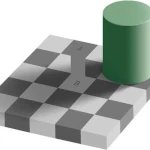
Gravitational illusion or gravitational mirage
In astrophysics, an illusion that astronomers are familiar with is the gravitational lensing or gravitational mirage.
A massive object, a cluster of galaxies, for example, which is between an observer and a distant light source, prints a strong curvature in space-time.
This has the effect of deflecting all light rays passing near the object, thereby distorting the images received by the observer. This amplification of the brightness of a distant celestial object, by a massive star in front, was predicted by the theory of general relativity in 1917. Massive objects are changing the geometry of space and time in their neighborhood.
Light on it always takes the shortest route, but in a curved space modified by the presence of a huge mass, the shortest path is not straight.
The light path is curved in the vicinity of massive stars. Most images of galaxies that lie in this photograph are multiple images of a single ring galaxy. A giant cluster of galaxies located in front, acts as a huge gravitational lens. In the foreground galaxies of this cluster are shown in yellow and behind the observed galaxy appears blue. A gravitational lens can create multiple images of background galaxies.
The singular form of the galaxy blue background (small blue spot in the center of the image), enabled us to deduce that this is the same as we see in 4 hours, 10 hours, 11 hours and 12 hours.
The analysis showed that at least 33 images of 11 different background galaxies are discernible in this image.
This spectacular photo of the galaxy cluster CL0024 1654 was taken by the Hubble Space Telescope in November 2004. Predicted by general relativity by Albert Einstein, gravitational lensing several have since been observed by Hubble. Sometimes, when the alignment between two objects is perfect, the image of the distant object can take the form of a ring of light surrounding the subject at hand. In case of perfect alignment between the observed source (eg a star), and another stellar object (a black hole for example), the black hole in front will act as a gravitational lens or deflector. The observer will not see the star as such but rather as a ring, this ring is appointed, the Einstein ring. A star, although having a mass much lower than that of a galaxy, can also act as a gravitational lens.
The effect is obviously much less powerful, it is called, micro gravitational lens.
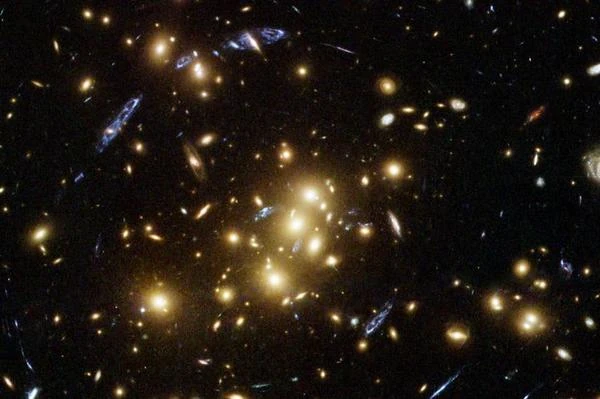
Image: This gravitational lens shows some strange blue objects drawn. They are spread in a circle in this picture, but are just multiple views of a single ring galaxy.
The singular form of the galaxy blue background (center of the cluster), enabled us to deduce that this is the same galaxy as we see in this picture 4 hours, 10 hours, 11 hours and 12 hours.
Moon Illusion
You have all seen a huge full moon rising on the horizon just above the houses of our cities.
The observation is surprising because it seems that the moon is huge, this famous optical illusion has no straightforward explanation. If we take a ruler and you measure the apparent size of the moon when near the horizon, and when it is high in the sky, we obtain the same extent, there is no difference.
Why our brain recreates a different picture of reality?
One explanation (still unclear) is that when we look at buildings or trees on the horizon, our brain interprets a distance not so far away.
When the moon is on the same horizon, the brain assumes that the Moon is also on this same distance scale, and amplifies its size. Conversely, when the moon is high in the sky, the brain compensates for this by making distance seem smaller.
However the Moon moves in an elliptical orbit like all cosmic objects and its distance from Earth varies.
At its apogee, the farthest point from Earth, is at 405 696 km, while at its perigee, it is 356 410 km.
Of course when it is at its perigee, it appears larger, more exactly 14%, 14% is the difference between the two apsis (points nearest and farthest) the orbit of the Moon relative to Earth. But the illusion of great Moon occurs as well for the apogee than the perigee.
NB: We feel that our Moon is very far from Earth, but if you wanted to travel this distance by car on a highway at 130 km/h, we would have only 115 days.
Image: Difference in the apparent size of the moon between apogee and perigee. At perigee (left), the Moon is 14% greater than apogee (right).
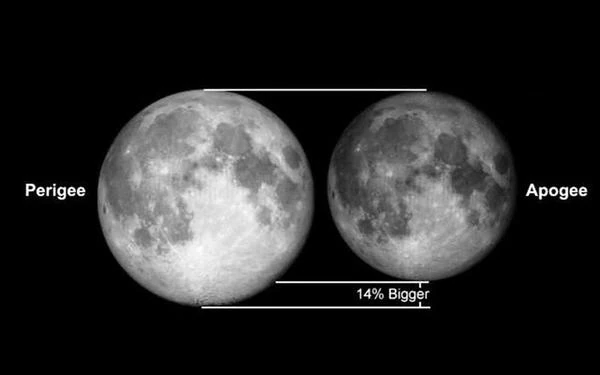
Articles on the same theme
1997 © Astronoo.com − Astronomy, Astrophysics, Evolution and Ecology.
"The data available on this site may be used provided that the source is duly acknowledged."
How Google uses data
Legal mentions
English Sitemap − Full Sitemap
Contact the author
 Sprites and Cosmic Rays: The Ghostly Lightning of the Atmosphere
Sprites and Cosmic Rays: The Ghostly Lightning of the Atmosphere 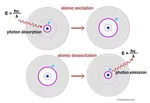 Principle of
absorption and emission of a photon
Principle of
absorption and emission of a photon  The Femtosecond Laser: From Ultra-Short Time to Extreme Power
The Femtosecond Laser: From Ultra-Short Time to Extreme Power  The World of Color
The World of Color 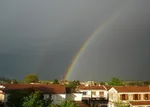 The colors of the rainbow
The colors of the rainbow  The Nature of Light
The Nature of Light  Plasma Lamp and Field Concept
Plasma Lamp and Field Concept  What is Vantablack?
What is Vantablack?  Michelson-Morley Experiment
Michelson-Morley Experiment 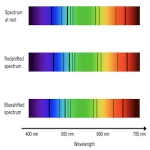 Redshift calculation (z)
Redshift calculation (z) 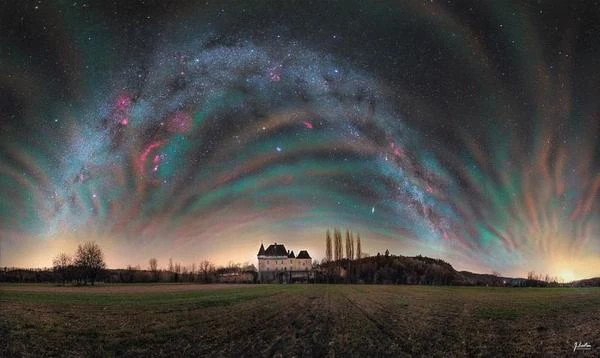 Spectacular airglow in France
Spectacular airglow in France 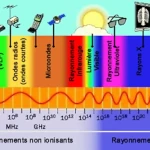 All the Light of the Electromagnetic Spectrum
All the Light of the Electromagnetic Spectrum  Solar Pillars: Celestial Mirages and Light Phenomena
Solar Pillars: Celestial Mirages and Light Phenomena  The Speed of Light: A Universal Constant
The Speed of Light: A Universal Constant  The Universe of X-rays
The Universe of X-rays 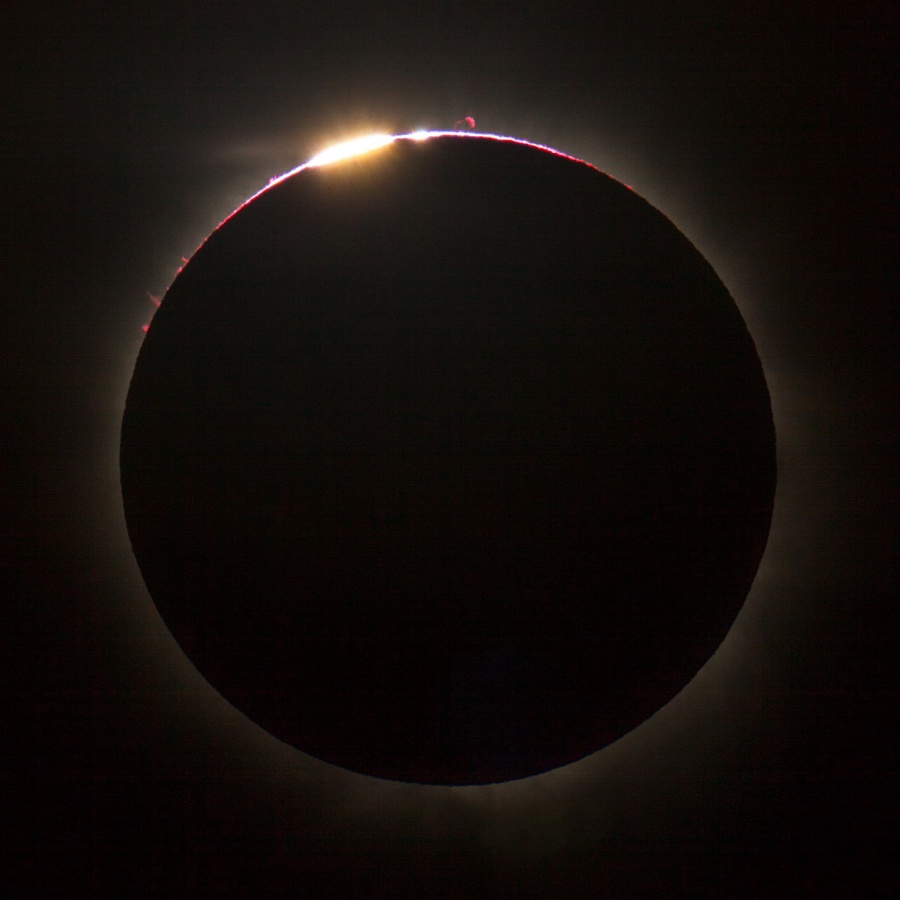 Diamond rings above the Pacific
Diamond rings above the Pacific 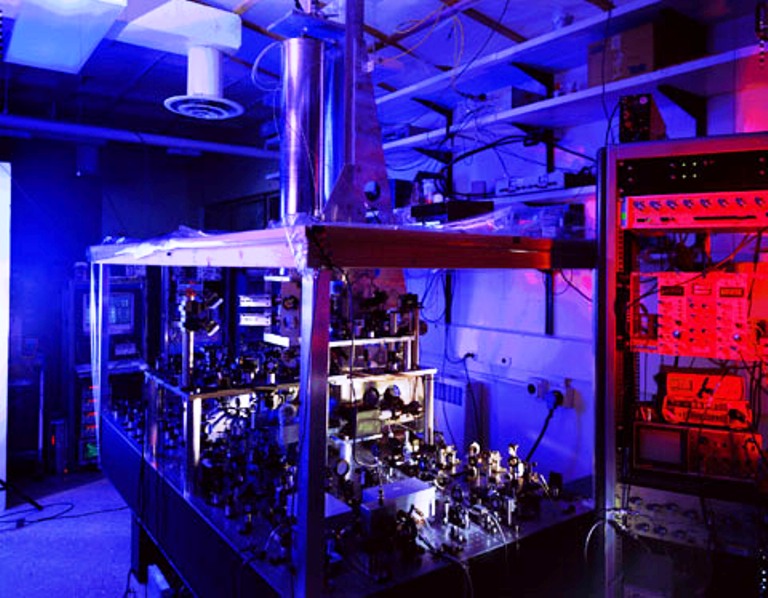 The incredible precision of the second
The incredible precision of the second  Effects of light aberration
Effects of light aberration 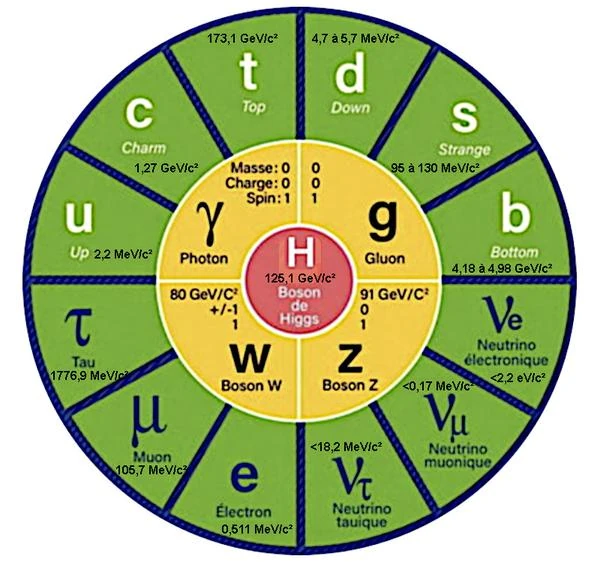 Why do elementary particles have no mass?
Why do elementary particles have no mass?  The shadow of the black hole
The shadow of the black hole 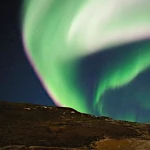 Polar Auroras: Lights of the Solar Wind
Polar Auroras: Lights of the Solar Wind  Blue Moon or Ice Moon: Understanding These Lunar Phenomena
Blue Moon or Ice Moon: Understanding These Lunar Phenomena 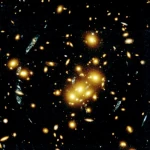 Gravitational Lenses: When Spacetime Becomes a Mirage
Gravitational Lenses: When Spacetime Becomes a Mirage 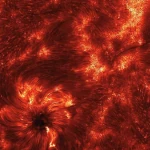 Traveling Light: How a Photon Leaves the Sun to Reach Earth?
Traveling Light: How a Photon Leaves the Sun to Reach Earth? 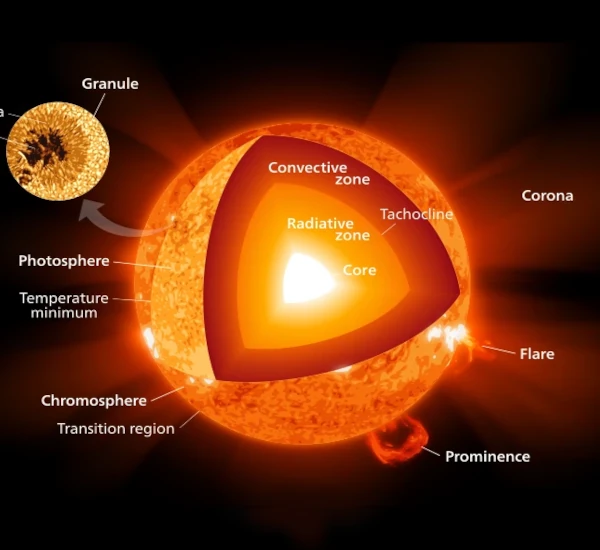 The power of the Sun
The power of the Sun 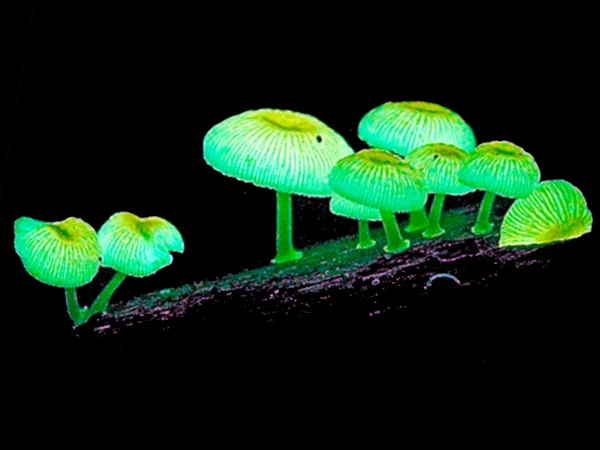 Bioluminescence of living organisms
Bioluminescence of living organisms 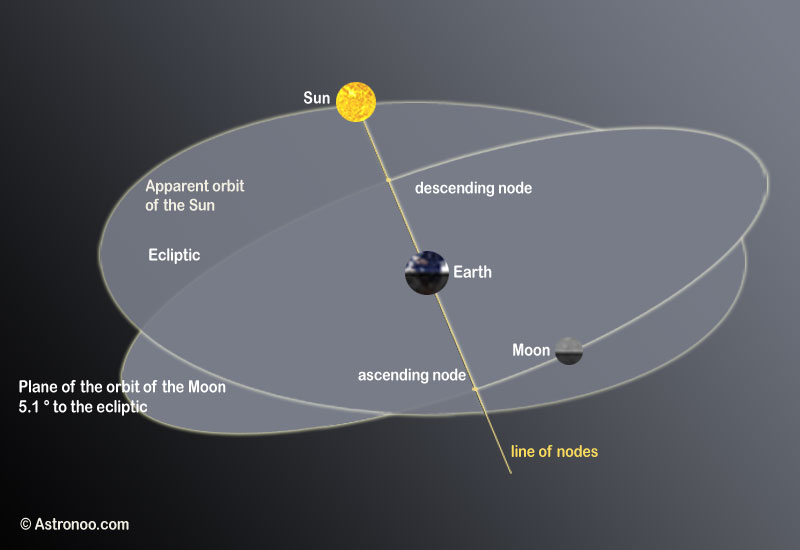 Eclipses explained by the plane of the orbit
Eclipses explained by the plane of the orbit 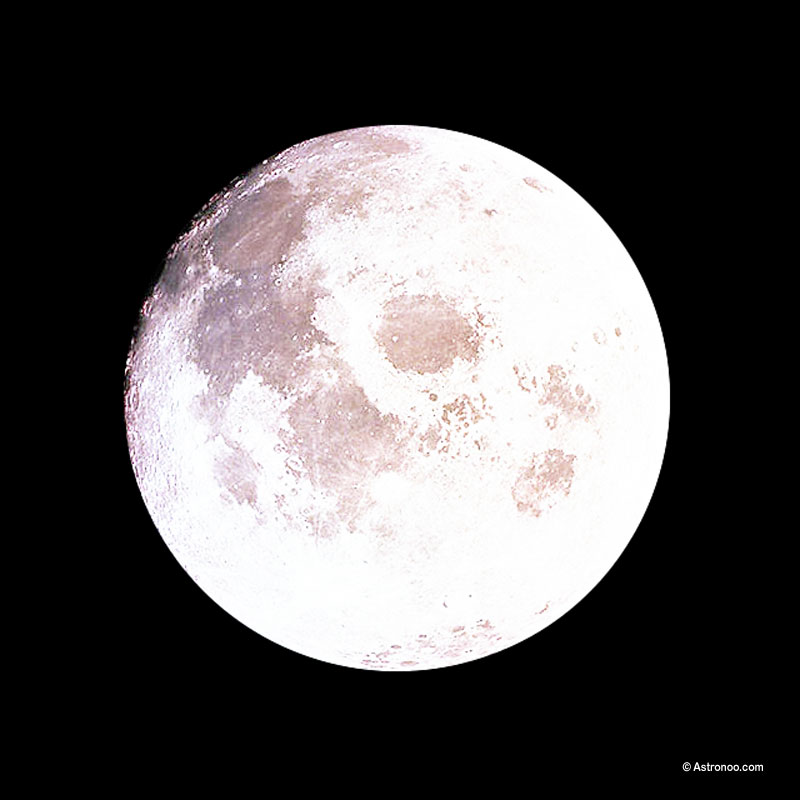 Super Moon
Super Moon  Laser light
Laser light  We do not see with our eyes but with our brain
We do not see with our eyes but with our brain 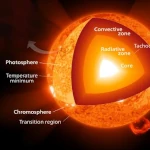 Differences between heat and temperature
Differences between heat and temperature 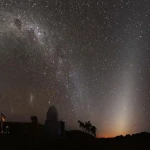 Zodiacal Light: Reflection of Interplanetary Dust
Zodiacal Light: Reflection of Interplanetary Dust  Explanation of the 8 of the analemma
Explanation of the 8 of the analemma  The Antitwilight Arch: Earth's Shadow
The Antitwilight Arch: Earth's Shadow  How many photons to heat a cup of coffee?
How many photons to heat a cup of coffee?  Spectroscopy: A Key to Analyzing the Invisible World
Spectroscopy: A Key to Analyzing the Invisible World  The Cherenkov light
The Cherenkov light 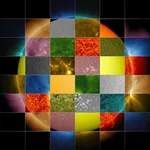 The lights of the Sun
The lights of the Sun  What is a Wave?
What is a Wave? 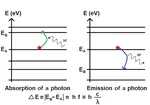 Planck's equation and black body light
Planck's equation and black body light  Energy Conservation
Energy Conservation